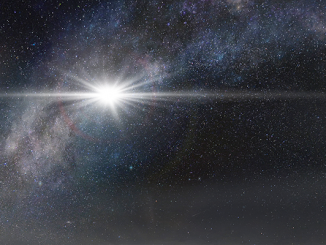
NASA’s Swift satellite


Record-breaking extragalactic gamma-ray binary found
Using data from NASA’s Fermi Gamma-ray Space Telescope and other facilities, an international team has found the first gamma-ray binary in another galaxy and the most luminous one ever seen. The dual-star system, dubbed LMC P3, contains a massive star and a crushed stellar core that interact to produce a cyclic flood of gamma rays.

Chandra X-ray Observatory finds evidence for violent stellar merger
Gamma-ray bursts, or GRBs, are some of the most violent and energetic events in the universe. Although these events are the most luminous explosions astronomers can observe, a new study using NASA’s Chandra X-ray Observatory, NASA’s Swift satellite and other Earth-based telescopes suggests that scientists may be missing a majority of these powerful cosmic detonations.

X-ray echoes of a shredded star provide close-up of monster black hole
Some 3.9 billion years ago in the heart of a distant galaxy, the intense tidal pull of a monster black hole shredded a star that passed too close. After X-rays produced in this event first reached Earth on 28 March 2011, scientists concluded that the outburst, now known as Swift J1644+57, also represented the sudden flare-up of a previously inactive black hole.

Possibly the most powerful supernova ever seen
Records are made to be broken, as the expression goes, but rarely are records left so thoroughly in the dust. Stunned astronomers have witnessed a cosmic explosion about 200 times more powerful than a typical supernova — events which already rank amongst the mightiest outbursts in the universe — and more than twice as luminous as the previous record-holding supernova.

Black hole Markarian 335 has major flare
The baffling and strange behaviours of black holes have become somewhat less mysterious recently, with new observations from NASA’s Explorer missions Swift and the Nuclear Spectroscopic Telescope Array, or NuSTAR. The two space telescopes caught a supermassive black hole known as Mrk 335 in the midst of a giant eruption of X-ray light.

Monster black hole wakes up after 26 years
On 15 June 2015, a long-time acquaintance of X-ray and gamma ray astronomers made its comeback to the cosmic stage: V404 Cygni, a system comprising a black hole and a star orbiting one another. It is located in our Milky Way galaxy, almost 8,000 light-years away in the constellation Cygnus, the Swan.

Supernova observed colliding with its companion star
Type Ia supernovae are violent stellar explosions that shine as some of the brightest objects in the universe, but there are still many mysteries surrounding their origin. Now a team of astronomers have witnessed a supernova smashing into a nearby star, shocking it, and creating an ultraviolet glow that reveals the size of the companion.

Universe expanding more slowly than previously thought?
A University of Arizona-led team of astronomers found that the type of supernovae commonly used to measure distances in the universe fall into distinct populations not recognised before. The findings have implications for our understanding of how fast the universe has been expanding since the Big Bang.
